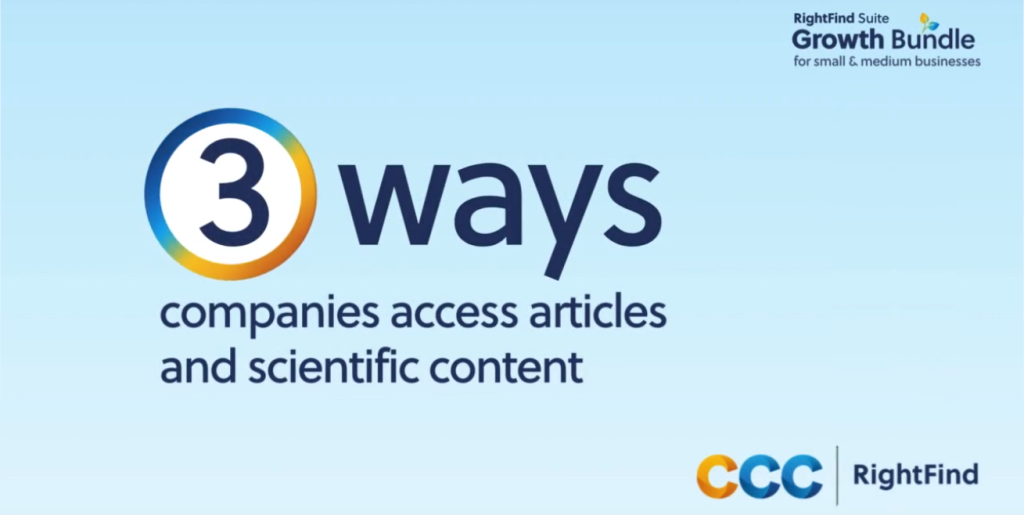When planning your organization’s literature budget, it’s important to consider the three main strategies for allocating spend—document delivery, subscriptions, and tokens.
In the video below, we break down these strategies to help you determine what combination of the three methods for accessing articles and other scientific content may be the best fit for your company.
Strategy 1 – Document Delivery
With document delivery, a request is placed for a piece of literature through your document delivery provider, and that literature is sent to the requester, often with a fee involved.
Document delivery is a method that allows employees to get access to content as they need it without having to anticipate in advance what content needs your company has.
To help reduce the risk of copyright infringement for your organization when employing this method, be sure content is being accessed from an authorized vendor or document delivery provider.
There can be a time delay from when a request is placed and the document is received. However, many vendors can provide a rapid turnaround time for most content. For example, RightFind from CCC is able to deliver on over 88% of content requests instantly.
Additionally, with document delivery, you’ll pay for each document as it’s requested, unless you have a CCC copyright license and use a provider who offers an automated storage solution integrated with that license.
It’s also possible that there might not be a fee if the literature happens to be published under open access. Keep in mind, however, that there are different “flavors” of open access, and some have limitations, such as not covering commercial use. In other words, content that shows up as free somewhere on the internet is not necessarily free through document delivery, too, since in the latter case it’s going to be used in a corporate setting.
Strategy 2 – Publisher Subscriptions
The next method of obtaining content is through subscriptions. If there’s certain literature that’s used heavily, then it will likely be more cost effective to obtain a subscription in which publishers charge a fee for use of a certain publication or a package of publications.
It’s important to note that typically only certain types of use are allowed with subscriptions. For example, subscriptions typically cover internal use. They may cover regulatory submissions, but not all subscriptions cover reactive use, and very few cover external use. Also, the terms of the subscription may not cover all published literature, but rather it may only cover literature published from a specified date range.
Subscriptions can be purchased for an entire organization or for a certain part of the organization, and they are usually set for a certain term, like one year or three years, at which time they can be renewed.
With subscriptions, your users can receive instant access to relevant content along with the ability to explore literature from a publisher without the need for additional fees.
Strategy 3 – Publisher Token Packages
Lastly, let’s explore token packages, which can sometimes be called metered access packages, content on demand packages, or deposit packages.
Publishers offer token packages as a way for organizations to pre-purchase content at a discounted rate. This can be helpful for organizations with diverse research and therapeutic areas or with lower-volume needs, letting them use tokens to access individual articles from a wide breadth of a publisher’s catalog of publications.
Tokens can be purchased as an alternative to subscriptions, or they can be purchased to supplement a subscription with a publisher. Some token packages expire—in those cases, it’s important to use historic usage data to ensure you’re not purchasing so many tokens that they expire before the package is used up.
Accessing Scientific Literature with RightFind
Whichever of these three methods, or a blend of them, your organization chooses to acquire content, make sure you’re using analytics to accurately plan your spend allocation, and to help you make accurate, data-driven decisions for your content investment strategy.
For more information on a document delivery provider that supports all these methods of obtaining literature and provides the option to track usage and spend for each, check out RightFind from CCC.

